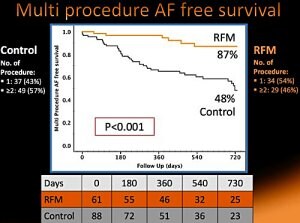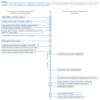Everything you know about teenage brains is bullshit
Kathryn Mills reports that discussion has become dominated by unconvincing 'experts' and scaremongering. The evidence is not in.
Forget what you've heard. We don't know much about how Internet use affects the brain
.
After years of being told that the Internet was rotting my brain, I decided to assess the damage by gathering the scientific evidence.
My review of the published scientific literature found no evidence that typical Internet use harms the adolescent brain.
I'm a neuroscience student researching human brain development, specifically during the teen years.
Our brain undergoes a lot of changes between childhood and adulthood, and the lab I work in is interested in how these changes relate to our ability to navigate the social world. It's fun work, especially because many people seem to be as interested in learning about the teen brain as I am.
Whenever I present my research to groups of parents or teachers, I'm usually asked a version of the question: "How are digital technologies affecting teenagers' brains?" Until I conducted this review, I would normally respond with a cautious, slightly dismissive, and utterly unhelpful answer: "We don't know."
The majority of teachers (87%) felt that Internet use was creating an “easily distracted generation with short attention spans,” and 88% felt that “today’s students have fundamentally different cognitive skills because of the digital technologies they have grown up with.”
While surveys can tell us about how people perceive the world, the scientific method allows us to test these observations for their validity. As E. O. Wilson said, "the heart of the scientific method is the reduction of perceived phenomena to fundamental, testable principles." With this in mind, I set out to review the scientific evidence for the Internet's impact on the brain--specifically the teenage brain.
However, to do so I had to first figure out how to define Internet use.
The Pew Research Center estimates around 87% of adults and 95% of teens in America are users. But Internet use is made up of multiple activities, and is different from video game use, computer use and screen time (all of which can occur offline). One of the most important parts of the scientific process is defining your variable of interest. For the purposes of this review, I defined Internet use as activities such as information gathering, entertainment, and communication accessed through the medium of the World Wide Web.

Then I looked through the 134 results to see if they were actually relevant.
Most were not.
The two studies I classified as empirical research studies did not measure brain changes in response to Internet use, but included experimental paradigms that could tell us something about the effects of Internet use. The studies that did relate Internet use to brain measures sampled an unrepresentative portion of the population, which means the results of these studies are unlikely to apply to most individuals.
The studies that have investigated the effects of Internet use on the adolescent brain have focused on adolescents experiencing serious problems from their Internet use (sometimes referred to as Pathological Internet Use).
It might surprise some to hear that the majority of adolescents (95.6%) do not fall into this category.
Most adolescents, like adults, do not experience serious problems from Internet use. We might be using the Internet every day, but most of us are functional users. What this means is that the studies that have shown brain changes in individuals with disordered Internet use do not apply to most adolescents.
A review conducted five years ago found that communicating with friends through the Internet is related to increased levels of social connectedness in adolescents. And, as I'm sure many readers are already aware, danah boyd has recently written a fantastic book on social media use in adolescence that goes into unprecedented depth on this topic.
In the review, I describe a few studies that could tell us something about how the Internet might shape our way of interacting with the world. Although these studies cannot tell us if Internet use is creating a generation with “fundamentally different cognitive skills,” they suggest that our way of dealing with information might be changing in a world that favors certain skills.
Since experience partially determines what neural connections are kept and strengthened during adolescence, some adults are concerned that Internet use could be “rewiring” the brains of the current generation.
This is exactly the kind of evidence that is lacking.

While Internet use is almost always thought of as harming the brain, this narrative is not extended to other activities such as musical training.
When I conducted a similar search, replacing the term Internet with music, I found quite a few studies examining how musical training relates to changes in brain measures and cognitive abilities in representative populations (non-professionals).
Perhaps future research examining Internet use can apply similar methods. However, it's important to note that studies showing simple correlations between brain measures and behavior cannot tell us if the behavior caused the change, or if the brain changes relate to well-being. Only longitudinal studies and studies that include measures of functional outcomes (e.g., cognitive measures and measures of well-being) can do that.
Also, I'm one scientist. It wouldn't surprise me if I missed relevant studies.
This is why I am maintaining a list of scientific studies relevant to this topic. If you know of any studies that could be added to this list, please submit them here.
That way, whoever writes the next review can incorporate as much evidence as possible.
.
After years of being told that the Internet was rotting my brain, I decided to assess the damage by gathering the scientific evidence.
My review of the published scientific literature found no evidence that typical Internet use harms the adolescent brain.
I'm a neuroscience student researching human brain development, specifically during the teen years.
Our brain undergoes a lot of changes between childhood and adulthood, and the lab I work in is interested in how these changes relate to our ability to navigate the social world. It's fun work, especially because many people seem to be as interested in learning about the teen brain as I am.
Whenever I present my research to groups of parents or teachers, I'm usually asked a version of the question: "How are digital technologies affecting teenagers' brains?" Until I conducted this review, I would normally respond with a cautious, slightly dismissive, and utterly unhelpful answer: "We don't know."
Ways of knowing
Teachers possess valuable knowledge about young people and generational trends. Over 2,000 American middle and high school teachers responded to a recent survey by the Pew Research Center asking them how they felt the Internet (and other digital technologies) were affecting their students.The majority of teachers (87%) felt that Internet use was creating an “easily distracted generation with short attention spans,” and 88% felt that “today’s students have fundamentally different cognitive skills because of the digital technologies they have grown up with.”
While surveys can tell us about how people perceive the world, the scientific method allows us to test these observations for their validity. As E. O. Wilson said, "the heart of the scientific method is the reduction of perceived phenomena to fundamental, testable principles." With this in mind, I set out to review the scientific evidence for the Internet's impact on the brain--specifically the teenage brain.
However, to do so I had to first figure out how to define Internet use.
The Internet
What does it mean to use the Internet?The Pew Research Center estimates around 87% of adults and 95% of teens in America are users. But Internet use is made up of multiple activities, and is different from video game use, computer use and screen time (all of which can occur offline). One of the most important parts of the scientific process is defining your variable of interest. For the purposes of this review, I defined Internet use as activities such as information gathering, entertainment, and communication accessed through the medium of the World Wide Web.

What I found
To find out if any scientific research had been conducted on this topic, I performed a simple search in the largest biomedical database for studies including the terms internet, adolescence (or teenager), and brain.Then I looked through the 134 results to see if they were actually relevant.
Most were not.
The two studies I classified as empirical research studies did not measure brain changes in response to Internet use, but included experimental paradigms that could tell us something about the effects of Internet use. The studies that did relate Internet use to brain measures sampled an unrepresentative portion of the population, which means the results of these studies are unlikely to apply to most individuals.
The keyboard and the damage done
The Internet is sometimes compared to drugs like heroin, but I think it is much more like coffee (which an estimated 83% of American adults drink).The studies that have investigated the effects of Internet use on the adolescent brain have focused on adolescents experiencing serious problems from their Internet use (sometimes referred to as Pathological Internet Use).
It might surprise some to hear that the majority of adolescents (95.6%) do not fall into this category.
Most adolescents, like adults, do not experience serious problems from Internet use. We might be using the Internet every day, but most of us are functional users. What this means is that the studies that have shown brain changes in individuals with disordered Internet use do not apply to most adolescents.
What we do know
While we may not know much about how the Internet affects brain development, there has been extensive work into how different Internet activities relate to the health and well-being of adolescents. Importantly, it is becoming clear that typical Internet use does not displace time spent doing IRL activities, such as participating in sports and clubs.A review conducted five years ago found that communicating with friends through the Internet is related to increased levels of social connectedness in adolescents. And, as I'm sure many readers are already aware, danah boyd has recently written a fantastic book on social media use in adolescence that goes into unprecedented depth on this topic.
In the review, I describe a few studies that could tell us something about how the Internet might shape our way of interacting with the world. Although these studies cannot tell us if Internet use is creating a generation with “fundamentally different cognitive skills,” they suggest that our way of dealing with information might be changing in a world that favors certain skills.
Shaping the developing brain
Repeated experiences in the world will affect neural architecture on some level; such is the nature of our brain. This is true for a human brain of any age. However, the developing brain contains more capacity for change.Since experience partially determines what neural connections are kept and strengthened during adolescence, some adults are concerned that Internet use could be “rewiring” the brains of the current generation.
This is exactly the kind of evidence that is lacking.

While Internet use is almost always thought of as harming the brain, this narrative is not extended to other activities such as musical training.
When I conducted a similar search, replacing the term Internet with music, I found quite a few studies examining how musical training relates to changes in brain measures and cognitive abilities in representative populations (non-professionals).
Perhaps future research examining Internet use can apply similar methods. However, it's important to note that studies showing simple correlations between brain measures and behavior cannot tell us if the behavior caused the change, or if the brain changes relate to well-being. Only longitudinal studies and studies that include measures of functional outcomes (e.g., cognitive measures and measures of well-being) can do that.
Absence of evidence is not evidence of absence
Just to be clear: I am not saying Internet use does not affect the developing brain. I just haven't found evidence to suggest that Internet use has or hasn't had a profound effect on brain development.
Also, I'm one scientist. It wouldn't surprise me if I missed relevant studies.
This is why I am maintaining a list of scientific studies relevant to this topic. If you know of any studies that could be added to this list, please submit them here.
That way, whoever writes the next review can incorporate as much evidence as possible.
Conflict of Interest
I grew up on the Internet
Shortly after I gave a presentation on this topic at the 2014 SXSW Interactive Festival, my mother unearthed this video:
As you might be able to tell from her hair and voice, my mother spent a lot of time in the late 80s tech-nerd party scene. She's been working with computers for longer than I have been alive. I know I am biased; I think the Internet can't be so bad because I grew up on the Internet.
Whenever an adult asks me if Internet use is harming the teen brain, I am tempted to reveal that I have been using the Internet since I was 9 years old. I think I'm functional. However, treating anecdote with anecdote isn't going to solve this debate. Also, it's clear that Internet use was a fundamentally different experience back when I was a child (see video).
Fear of Internet will fade
As more digital natives populate science and positions of power, the fear that the Internet is harming the teen brain will fade. A newer technology will replace it. We can combat this endless cycle of technofear by including younger voices in debates on topics that concern them.
A great example of scientists listening to young people is a study conducted by Suparna Choudhury and colleagues, in which neuroscientists asked adolescents their thoughts on the science of the adolescent brain.
Open up the discussion
It's my hope that this article, and the review, will provoke discussion. Unfortunately, I feel that the discussion about how the Internet could be affecting brain development has been dominated by adult 'experts'. Young people's experiences and thoughts about this topic are valuable sources of knowledge. Without a doubt, Internet use affects our lives. However, we currently do not know how it is impacting brain development. So if anyone has ideas for experiments to test this, let's hear them.
Illustration: Rob Beschizza / Shutterstock










